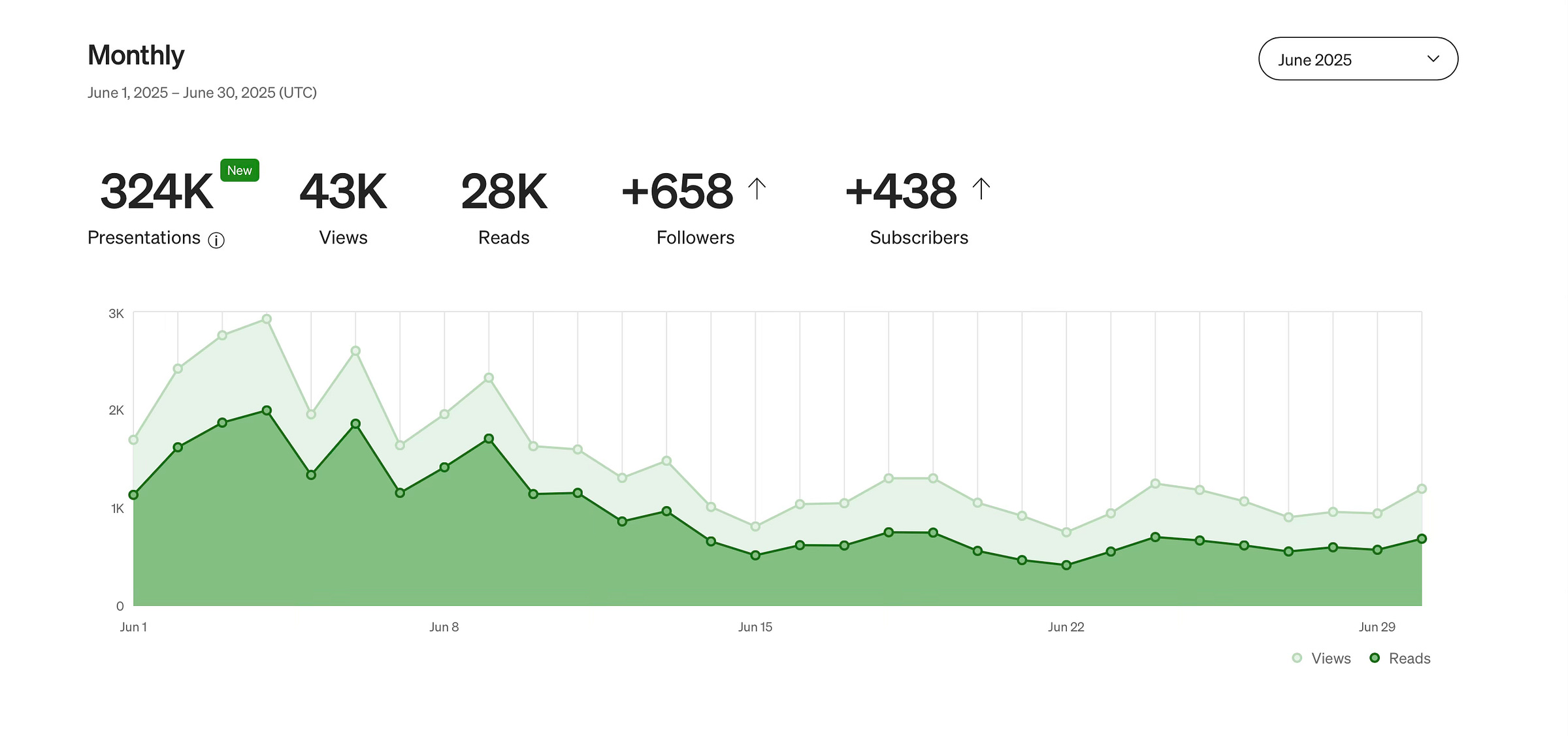Medium Adds “Presentations” to Stats
And it’s the Missing Piece You Didn't Know You Needed
Brought to you by WriteStack* - The #1 Substack tool for writers who want to take their Stack to the next level
For years, Medium stats were okay, but nothing too special.
You’d open your dashboard, stare at “views” and “reads,” nod or shake your head, and go about your day.
Then you wonder: But how many people actually had the chance to click on my story in the first place?
That gap is now closed.
Medium rolled out a new metric called “Presentations” and it’s an important one.
What’s a “Presentation”?
So, what’s the deal here?
Think of “presentations” as the very top of your story’s funnel. It’s not about who clicked or read.
It’s simply:
How many people saw your story card in their Medium home feed.
How many times it appeared in search results, topics pages, or related stories.
How often Medium showed your headline, preview, or thumbnail to users across the platform.
They even count email and push notifications here
This is raw visibility. And it’s a huge metric.
Until now, we didn’t know that number.
We only saw views (how many clicked) and reads (how many stayed for at least 30 seconds).
That made it easy to confuse underperformance with invisibility.
Now, with “presentations,” you can separate the two:
Did your story get ignored despite strong placement?
Or did it simply not get much distribution in the first place?
Here’s why that’s really important
Turn your iPhone home screen into a stunning Vision OS* version.
The Reach Funnel
Click into any story, and you’ll see a simple but powerful funnel:
Presentations → how many people were shown your story.
Views → how many clicked in.
Reads → how many stuck around for at least 30 seconds.
This three-step funnel finally gives us context. Instead of wondering why one story “flopped” compared to another, you can see:
Was it shown to fewer people?
Did it have a lower click-through rate (CTR)?
Or did people bail after a few sentences?
That’s gold for writers who want to grow based on analytics.
Why This Matters
Medium has always been a little opaque about distribution. To say the least.
We knew the algorithm rewarded certain things, like consistent writing, engaging headlines, topic alignment, human style, boost-worthiness and more, but we couldn’t measure exposure.
Now, you can more easily. For example:
If a story has high presentations but low views, your headline or thumbnail may not be compelling enough. So, more clickbaity style (but clickworthy) would help.
If you see strong views but weak reads, the intro or writing style might not be hooking readers. So, you might want to focus more on the first few sentences to really grab attention.
If you’re barely getting presentations at all, the issue can be complex. Bad timing, missing tags or topics, algorithmic reach, and more.
In short: you can finally diagnose more thoroughly what’s broken instead of guessing.
This also levels the playing field. Writers can stop blaming the algorithm for everything and start tweaking the parts we can control: titles, subtitles, previews, and hooks.
No More Blindspots
This update patches one big blindspot Medium writers have lived with for years.
Before, a story with 50 views could have been seen by 70 people (pretty good!) or 7,000 (pretty bad!).
We simply didn’t know.
Now, you can stop guessing and start testing.
Experiment with headlines.
Track how presentations convert to views.
Pay attention to stories that win attention vs. those that get scrolled past.
The Bottom Line
Medium is slowly tweaking quite a few things in the background.
This is a platform built on discovery. For writers, that means success often hinges on being chosen in a split second when someone’s scrolling past dozens of options.
With “presentations”, we finally have more visibility into that critical moment. The instant, our story could have been clicked.
The rest is up to us. It’s not Medium’s job to make us better writers.
Brought to you by WriteStack* - The #1 Substack tool for writers who want to take their Stack to the next level





It seems they and substack are trying to play wack a mole with each other, while finally releasing stats that are available in other dashboard tools for ghost and other platforms tools